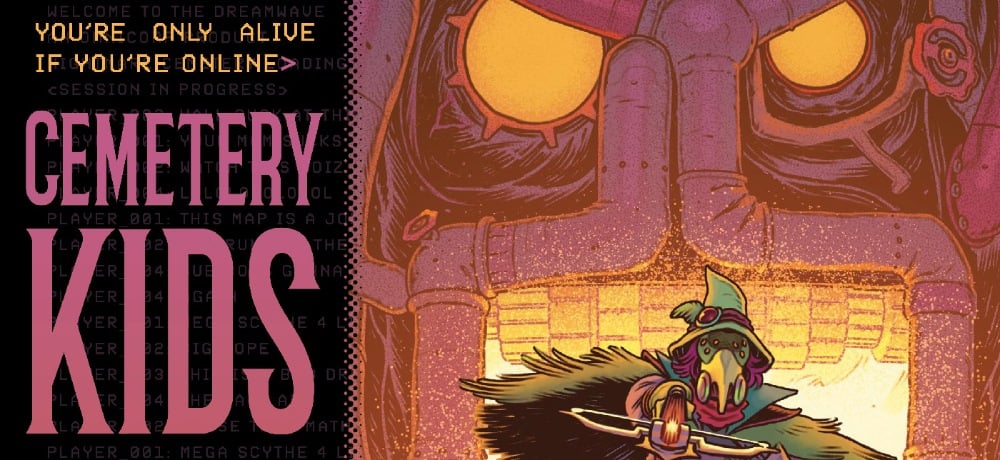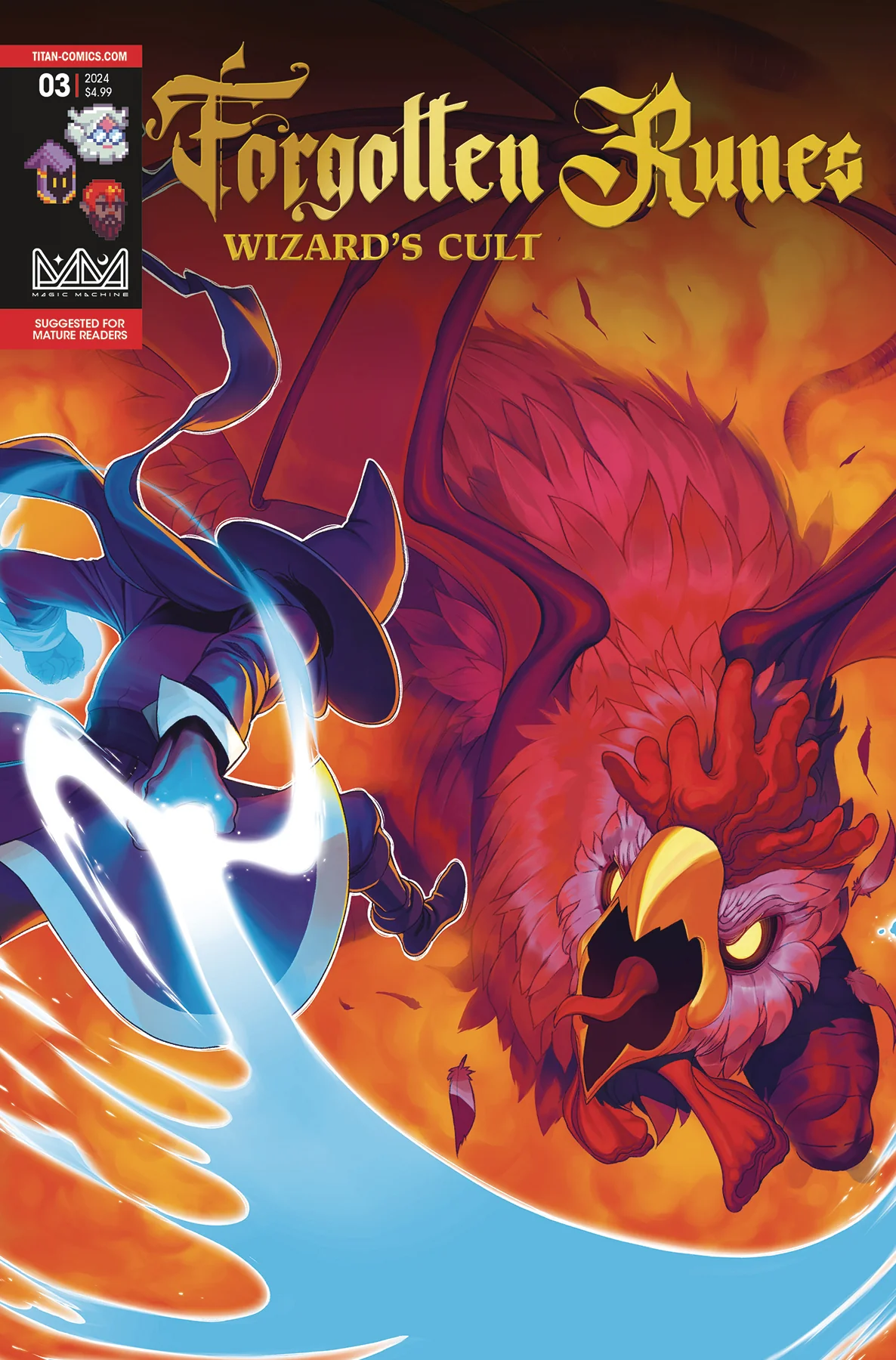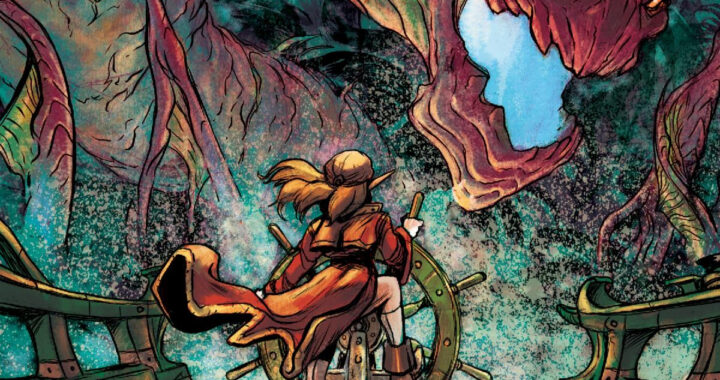
REVIEW: Destiny Gate #4 (of 4)
 Short, sweet, and right to the point. Destiny Gate is a psychological thriller turned comic, that’ll hit you like a speeding train. This issue of the comic has us follow Mitchell Slate as he confronts his rage to survive a maniacal robot out to get him. Grungy artwork, simple lettering, and wonderful panel layouts join forces to deliver a story that not only entertains but teaches you about the moralities of mankind.
Short, sweet, and right to the point. Destiny Gate is a psychological thriller turned comic, that’ll hit you like a speeding train. This issue of the comic has us follow Mitchell Slate as he confronts his rage to survive a maniacal robot out to get him. Grungy artwork, simple lettering, and wonderful panel layouts join forces to deliver a story that not only entertains but teaches you about the moralities of mankind.
Based on the game concept by Paul Limon, Destiny Gate follows Mitchell Slate as he traverses his inner hell to find his way back home and hopefully not go insane on the way. This was a very enjoyable read, it was quite short as it has several silent panels and only runs for about 19 pages of story. This is a shame because even though it is quite well paced it still feels a tad bit too short for how awesome it is. In a way, this is a good thing because it leaves you wanting more and jumping at the chance to purchase the next issue but still I wish we had a bit more of a look at the world of Destiny Gate with perhaps a few more panels of details or establishing shots. That being it is quite good. It gave me an instant reminder of the sort of psychological thrillers we’ve grown up with in movies such as Shutter Island or even something like Memento. It is weird, it is cryptic and it packs a deeper message that reflects into the reader’s humanity.
This issue revolves around Mitchell jumping a train that is ahead straight through to a robot that embodies his inner rage. Mitchell must face this robot if he hopes to escape the nightmare and arrive a step closer to understanding his world and his place in it. There are a few comedic elements mostly in the way of the banter that Mitchell has with the conductor of the train, but the overall tone of the story is quite somber and dramatic. With a few action shots, this however is mostly psychological and does a fantastic job of tugging at your heart in unexpected ways. These unexpected ways come as a direct relation to the negative emotions that you feel inside yourself and how often we try to run away from the darkness that is inside every one of us. However, if ever we are to shine through this darkness we must make amends stop picking the easy way out, and face our fears head-on. Mitchell does this when confronted face-to-face with the idea of killing his rage or making peace with it and choosing a healthier route. It is through this choice that Mitchell can awaken from the nightmare and finally disembark from the train.
The art is indie as ever and it works great for this sort of story. Everything is grungy with a lot of textures, but on the line art as well as on the coloring. Coloring that is mostly composed of muted colors in the palette of blues, greens, greys, and oranges. I loved that the train itself is a vibrant yellow color, because it so easily contrasts with the rest of the story, almost as if the train is something that exists both in this nightmare world and in the real world, perhaps a vehicle through which Mitchell can escape the dreaded Destiny Gate. Whilst the environment design is stellar and many of the shots are composed in such ways that the angles heighten the action, I still wish we could get a few more establishing shots here and there, such that we could get a better look at the overall world of Destiny Gate. I think a few great opportunities were missed, for example, the first time we see the rage robot we get a stellar full-page illustration that truly puts the robot into colossal perspective, however, this is the only time we get a full-page illustration, and I think we could have gotten at least one more that involved either the junkyard environment of the nightmare or simply a highlight at the beautiful design of the yellow train. Other than this minor grievance, this story is well illustrated, and whilst it’s mostly a grim thriller/drama it still has a few action scenes that are worth their weight in gold. Not to mention that the aesthetics are reminiscent of books such as Will Eisner’s “The Spirit” or Mike Mignola’s “Hellboy” meshing the dark heavy ink-spotting techniques of Mignola with the film noir character designs of Eisner.
The lettering is simple but works well for the type of story being told. We get a small dose of word ballon variation, but still just enough variation that we aren’t stuck reading the same oval ballons on every page. I also think that the amount of silent panels versus dialogue panels is very well balanced, and it doesn’t feel as thus we are seeing a silent movie but also not reading a novel. This mix of silence but deadly dialogue makes great use of the medium of comics and makes for a quick but thrilling read. There are also some very well-done sound fx texts, however, with the very limited amount of full-page illustrations, it must be noted that the sound fx text could not be used to its maximum. They serve to add an extra layer to the world but aren’t given enough room to define a true aesthetic style for this story. It is efficient lettering that is waiting to breathe in bigger, bolder full-page illustrations.
I enjoyed it. It is easy to read, straight to the point and even though I’m jumping in at the 4th issue the credit page did a fantastic job at summarizing the story in three quick paragraphs that told me who the major players where and what to expect from the story. If you’re in the market for a psychological thriller, a film noir aesthetic, and something that will without a doubt make you reflect on your wants, needs, and demons then Destiny Gate is for you.
Writing: 5 Stars
Art: 5 Stars
Colors: 5 Stars
Overall: 5 Stars
Written by: Ryan Cady
Lineart by: Christian DiBari
Coloring by: Simon Gough
Lettering by: Troy Peteri
Cover art by: Christian DiBari & Simon Gough
Variant Covers by: Koi Turnbull & John Starr
Published by: Image Comics
Author Profile
Latest entries
 Comic BooksMarch 30, 2024REVIEW: Monstress #50
Comic BooksMarch 30, 2024REVIEW: Monstress #50 Comic BooksMarch 28, 2024REVIEW: Cemetery Kids Don’t Die #2
Comic BooksMarch 28, 2024REVIEW: Cemetery Kids Don’t Die #2 Comic BooksMarch 27, 2024REVIEW: Forgotten Runes #3 (of 10)
Comic BooksMarch 27, 2024REVIEW: Forgotten Runes #3 (of 10) Comic BooksMarch 6, 2024REVIEW: Sam and Twich- Case Files #1
Comic BooksMarch 6, 2024REVIEW: Sam and Twich- Case Files #1








